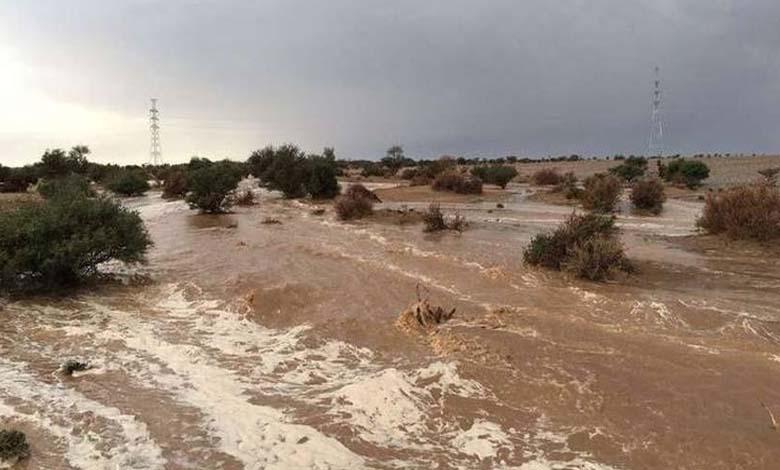Rain alleviates thirst concerns in Tunisia, raising a “warning bell”

Tunisia experienced heavy rainfall in the past two days after a prolonged drought that affected the overall reservoir levels in dams.
Since Sunday, heavy rains fell in all eastern provinces of Tunisia, intensifying on Monday night, increasing the dam levels in the country but causing several homes to flood.
Deputy Director of Grains at the Tunisian Ministry of Agriculture, Mohamed Ali Ben Ramadan, said that the dam levels have risen to 25% after the recent rains, compared to 21% before. He considered this percentage still below normal levels but indicated that “these rains signal the start of the major agricultural season.”
He expressed optimism about the success of the major agricultural season thanks to these rains, especially considering that drought has affected the country for the past four years.
On the other hand, Amer Bahbeh, an expert in geography and natural risks, mentioned that dam revenues reached 82 million cubic meters, equivalent to 82 days of consumption, given that the daily consumption rate in Tunisia is estimated at one million cubic meters.
He explained that the percentage is starting to improve due to significant rainfall recorded in all provinces as a result of the low-pressure system currently affecting Tunisia.
He noted that rain is expected to continue today and tomorrow, with the weather turning cold. Damages These long-awaited rains in Tunisia revealed the fragility of the country’s infrastructure, prompting Tunisian authorities to alert citizens to exercise caution.
In the Kairouan governorate (central Tunisia), local authorities decided to evacuate homes at risk of collapse and relocate their residents to designated shelters until permanent solutions are found.
This decision followed an emergency meeting of the local committee for disaster prevention and response to assess the situation of the old city of Kairouan. Some homes and sites threatened with collapse, as well as parts of the city’s wall, posed a danger to residents and pedestrians, especially with the expectation of significant rainfall.
Rainwater also inundated several homes in various Tunisian regions, including Manouba (suburb of the capital) and the governorates of Monastir and Sousse. Residents issued distress calls to the government and relevant authorities to intervene, lift their isolation, and rescue them from this situation.
On Tuesday morning, a part of the historic door in the city of Monastir collapsed due to rainfall. The incident did not cause any human casualties, and the site was secured for the safety of citizens, with restoration work planned soon.
The spokesperson for the Civil Defense, Moez Triaa, said that their teams intervened by removing 83 stranded vehicles due to heavy rain. They also conducted 180 inspection operations, 145 water pumping operations, and assisted citizens in crossing numerous roads.
Tunisians were urged to stay away from buildings prone to collapse due to the recent heavy rains, with the spokesperson adding, “All Tunisians must avoid crossing valleys and watercourses, whether on foot or in a vehicle.”
He explained that streams with a height of 30 centimeters can drag a light car, while if the height reaches 45 or 50 centimeters, it can carry a light truck. Drought Season Tunisia has suffered from a drought disaster over the past four years due to climate change.
October 2023 ranked first among the driest Octobers since 1950, with a 96% rainfall deficit, according to the climate bulletin for October 2023 from the National Institute of Meteorology.
Rainfall was absent in most regions, except for some northern stations, where very low quantities were recorded. The total average for the month was 41.1 millimeters, while the normal average for the same stations was 1036.6 millimeters, representing only 4% of the normal monthly average.












